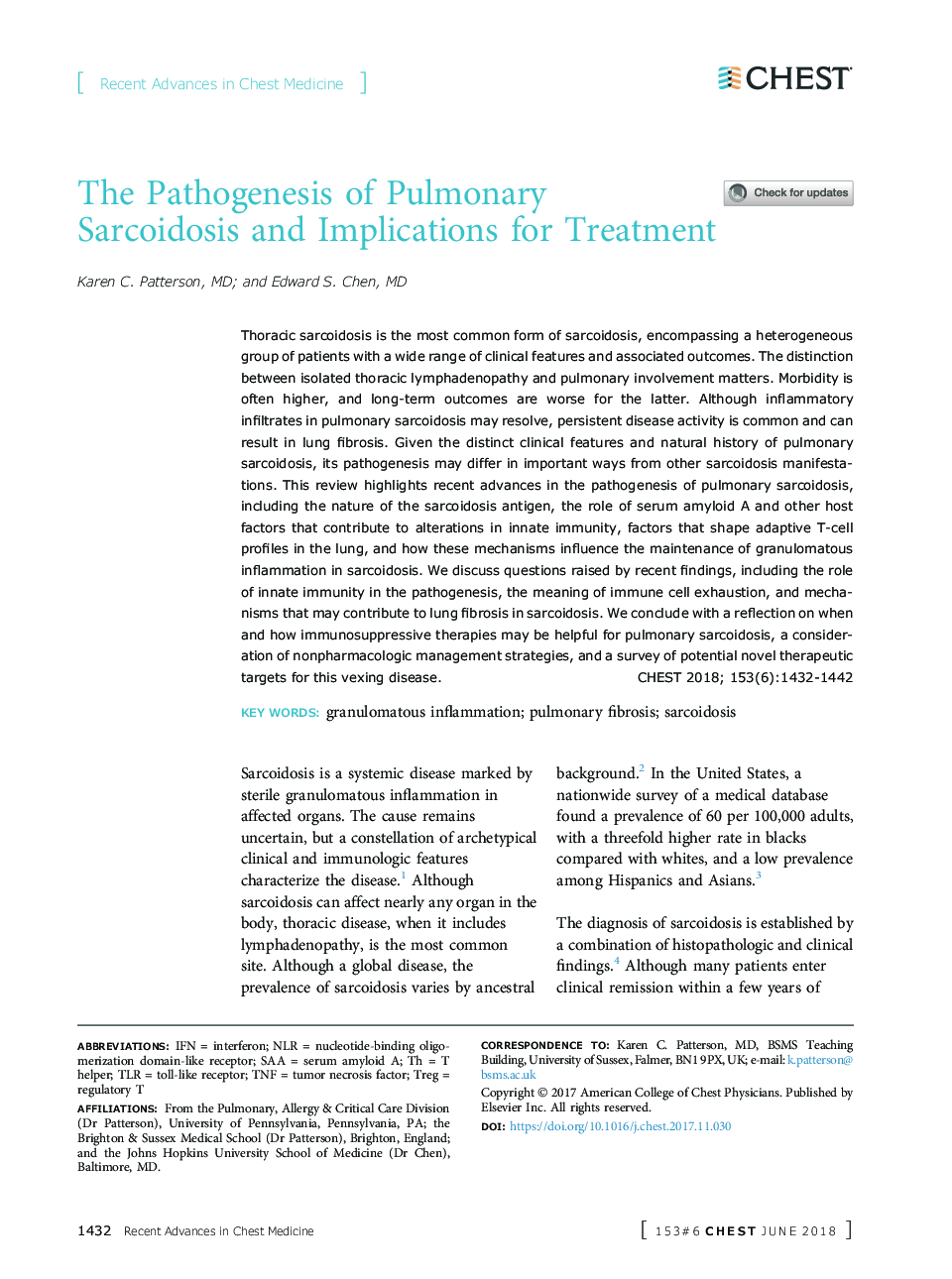| Article ID | Journal | Published Year | Pages | File Type |
|---|---|---|---|---|
| 8657833 | Chest | 2018 | 11 Pages |
Abstract
Thoracic sarcoidosis is the most common form of sarcoidosis, encompassing a heterogeneous group of patients with a wide range of clinical features and associated outcomes. The distinction between isolated thoracic lymphadenopathy and pulmonary involvement matters. Morbidity is often higher, and long-term outcomes are worse for the latter. Although inflammatory infiltrates in pulmonary sarcoidosis may resolve, persistent disease activity is common and can result in lung fibrosis. Given the distinct clinical features and natural history of pulmonary sarcoidosis, its pathogenesis may differ in important ways from other sarcoidosis manifestations. This review highlights recent advances in the pathogenesis of pulmonary sarcoidosis, including the nature of the sarcoidosis antigen, the role of serum amyloid A and other host factors that contribute to alterations in innate immunity, factors that shape adaptive T-cell profiles in the lung, and how these mechanisms influence the maintenance of granulomatous inflammation in sarcoidosis. We discuss questions raised by recent findings, including the role of innate immunity in the pathogenesis, the meaning of immune cell exhaustion, and mechanisms that may contribute to lung fibrosis in sarcoidosis. We conclude with a reflection on when and how immunosuppressive therapies may be helpful for pulmonary sarcoidosis, a consideration of nonpharmacologic management strategies, and a survey of potential novel therapeutic targets for this vexing disease.
Keywords
Related Topics
Health Sciences
Medicine and Dentistry
Cardiology and Cardiovascular Medicine
Authors
Karen C. MD, Edward S. MD,
